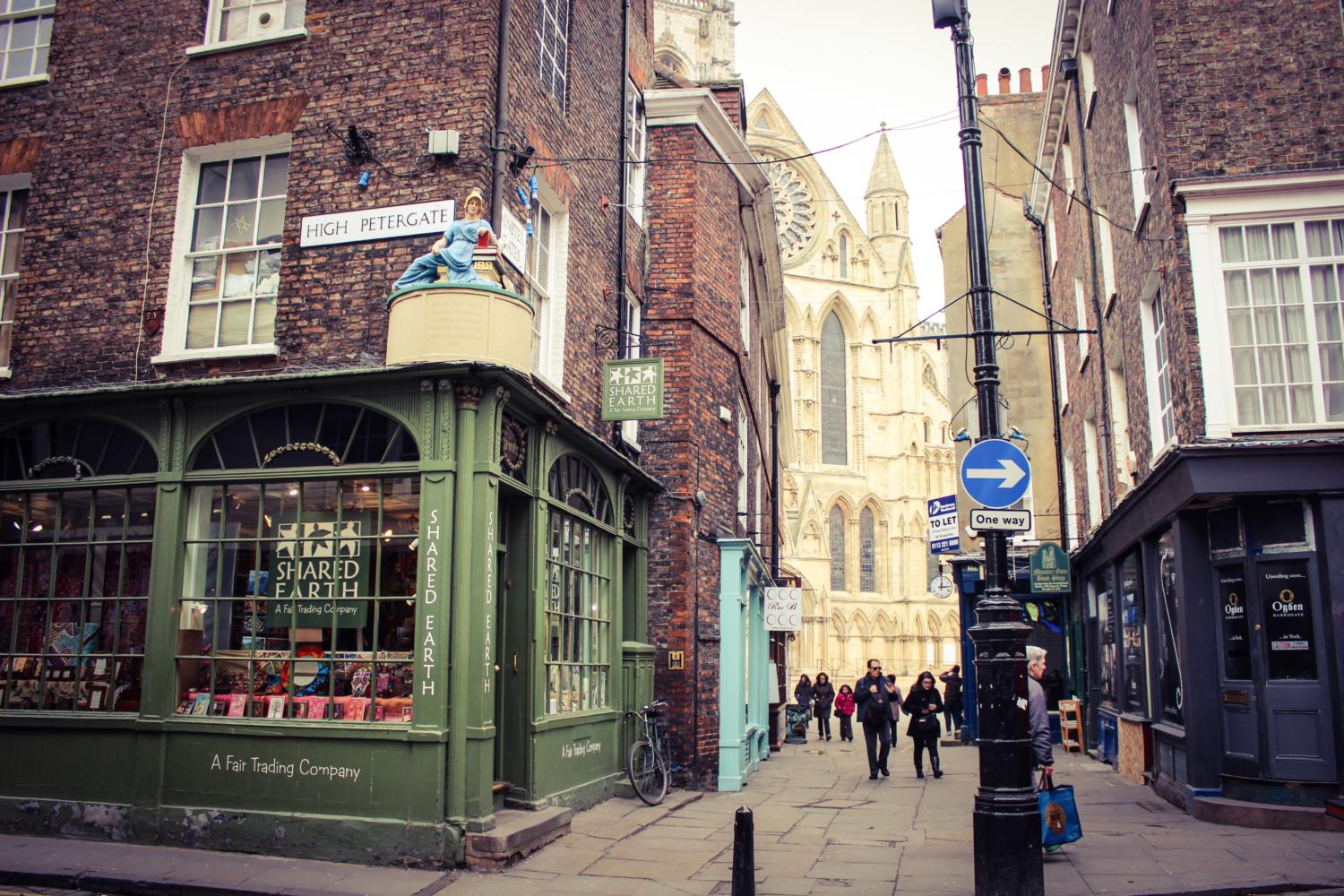1. The Grand Opera House was originally a corn exchange! Now known for exchanges of wit at comedy shows, musicals, and the panto, the buildings that comprise the iconic theatre were intended for the exchange of something much less entertaining — corn. But when the Corn Exchange failed in 1902, the buildings were repurposed into the Grand Opera House and have stayed that way for the more than 100-years since!
2. York Minster isn’t its real name! York Minster’s official name is the “Cathedral and Metropolitical Church of St Peter in York.” ‘Minster’ is actually an Anglo-Saxon name for a settlement of clergy involved in daily prayer.
3. The city walls are the longest found anywhere in England. In sharp contrast to Whipmawhopagate, the bar walls are the biggest around, stretching a full 2.1 miles. Unlike the majority of English cities with large city walls, like Edinburgh and Newcastle, when York’s great railway designer G. T. Andrews moved the station to sit in the city centre, he opted to build around the walls rather than destroying them completely.
4. The earliest settlement in York isn’t Roman! There is archaeological evidence, including polished stone axes discovered on the south bank of the river Ouse, that dates back to 8000BC. So, 8,071 years before the Romans established the city of Eboracum that would become York.
5. There’s a pub in York for every day of the year! It’s estimated that there’s at least 365 pubs in York which means that — although we absolutely don’t recommend it!— you could drink in a different spot every day for an entire year without having to repeat yourself!
6. The Minster has its own police force! Ever since 1106, The Minster has had its very own cathedral constabulary of police officers who are completely independent from the rest of the city of York. Today there are ten officers, two wardens and one sergeant.
7. York Theatre Royal started life as an illegal operation! Now established as one of York’s best loved cultural venues, and one of the best-known independent theatres in the country — life wasn’t always so easy for York Theatre Royal. The theatre was first established in 1734 (that’s more than 275-years ago!), but due to a law imposed in 1642 by Oliver Cromwell’s Puritan government, every theatre in the country was still banned! Any actors caught performing could be sentenced to hard labour, luckily for us that didn’t put them off, and by 1769 York Theatre Royal had its very own Royal Licence. The rest, as they say, is history …
8. Goodramgate is named after a Viking! In 878AD a great Viking chieftain led his army of bloodthirsty Vikings through the streets of York. His name? It was Guthrum. Seems quite obvious where the name came from now.
9. The 3rd oldest school in England is in York! St Peter’s School, which is still situated on Bootham in York, was founded in 627AD! That’s 396 years ago! Only two schools are older. Although one is in Rochester and one is in Cambridge, both of the older schools are called the same thing — The King’s School.
10. York is home to one of the longest-running plays in the world. Pretty much every year around December and sometimes at Easter, we come to expect the return of the York Mystery Plays, the series of travelling outdoor productions focused on biblical events and the life of Christ. The first recorded Mystery Plays occurred in the 12th Century! That’s almost 400 years before Shakespeare wrote his first tragedy.
Have you got an interesting fact we didn’t think of? Or have an area of York’s history you’d like us to explore in further detail? Reach out to us at info@yourlocallink.co.uk









Add a comment